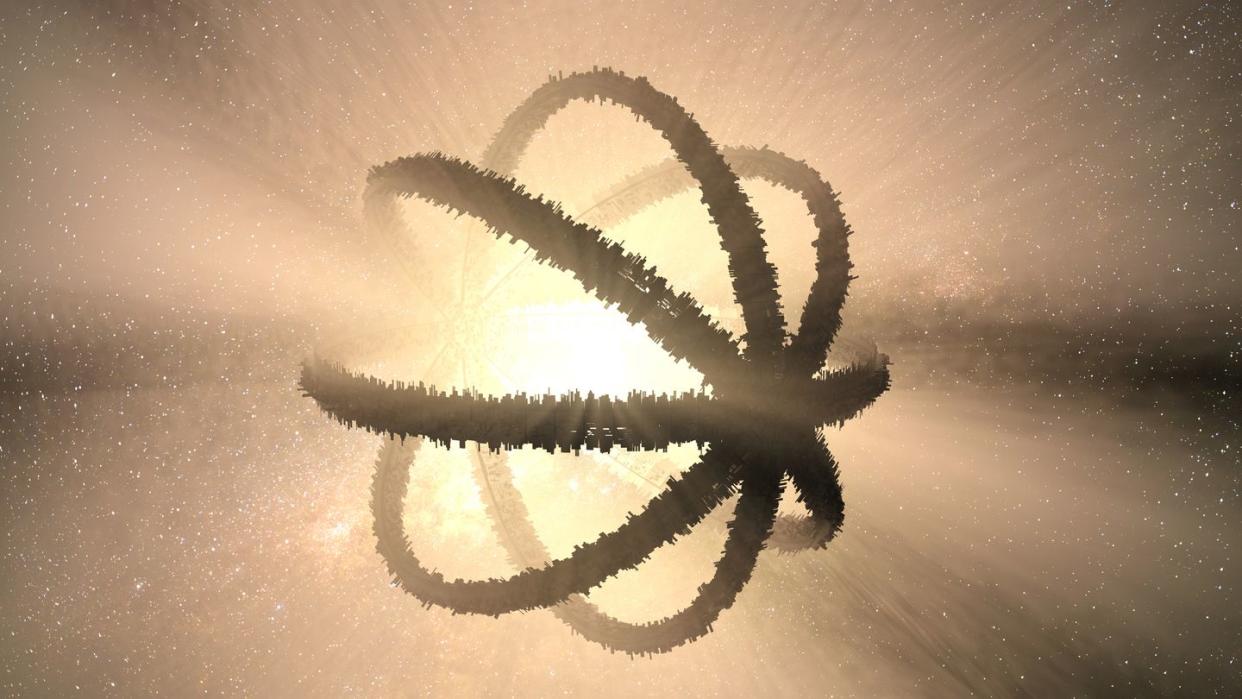A Study Suggests We Found Potential Evidence of Dyson Spheres—and Alien Civilizations

"Hearst Magazines and Yahoo may earn commission or revenue on some items through these links."
For more than half a century, scientists have wondered if searching for technosignatures like Dyson Spheres from super-advanced civilizations could help us discover intelligent life elsewhere in the universe.
Two new studies analyze data from star-gazing satellites to develop a framework for eliminating false positives or potential natural explanations in that search.
Each study found evidence that a handful of stars among the millions observed contain excess radiation that’s consistent with potential Dyson spheres and can’t be immediately explained away as a natural phenomenon.
The search for alien life comes in many flavors, from hunting for Earth-like planets, to looking for stars with Sun-like characteristics, to tuning into some kind of alien transmission. But for more than 60 years, one particular type of search for alien worlds has centered around the idea of a Dyson Sphere.
First proposed by physicist Freeman Dyson in 1960, the idea is that a sufficiently advanced civilization (at least Type II on the Kardashev scale) would be capable of harnessing the power of its host star by constructing a kind of cocoon that could tap into a large percentage of the star’s released energy.
Over the years, the concept of Dyson Sphere has evolved to include a variety of potential constructs, including rings, bubbles, and swarms (a constellation of satellites tapping a star’s energy). But their impact from our perspective is all the same—variability in a star’s luminosity coupled with excess infrared light due to waste heat.
Finding such a star among the millions observed by star-gazing projects, such as the Gaia satellite, Wide-Field Infrared Survey Explore (WASE), and the Two Micron All Sky Survey (2MASS), is even worse than looking for a needle in a haystack. But recently, two separate studies accepted the challenge, and came across more than a few compelling candidates.
The first study, led by Ph.D. student Matías Suazo at Uppsala University in Sweden, is actually the second paper relating to Project Hephaistos, which describes its mission as “searching for extraterrestrial intelligence using indirect signatures of astroengineering.” Looking at optical and infrared data from the aforementioned satellites, the team developed a comprehensive method for examining the data and identifying potential Dyson Spheres and their resulting technosignatures. The results were accepted for publication in the Monthly Notices of the Royal Astronomical Society.
“This structure would emit waste heat in the form of mid-infrared radiation that, in addition to the level of completion of the structure, would depend on its effective temperature,” Suazo and his colleagues wrote in the paper. “A specialized pipeline has been developed to identify potential Dyson Sphere candidates focusing on detecting sources that display anomalous infrared excesses that cannot be attributed to any known natural source of such radiation.”
This pipeline includes weeding out candidates with nebulae features (as they often produced false positives), analyzing signal-to-noise ratios, and examining hydrogen-alpha particles, as well as taking a close look ar many other well-known “flags” for false positives in the Gaia-WISE data. Starting with a mind-boggling five million objects, this workflow winnowed that number down to just seven particularly compelling candidates.
“All sources are clear mid-infrared emitters with no clear contaminators or signatures that indicate an obvious mid-infrared origin,” the paper reads. However, the authors were also careful to point out that some natural causes could eventually disqualify even these high-quality candidates. “The presence of warm debris disks surrounding our candidates remains a plausible explanation for the infrared excess of our sources.”
Simultaneously, a second study conducted by the International School for Advanced Studies in Italy found 53 star candidates with excess mid-infrared measurements, but in both cases, it’s possible that Extreme Debris Disks—which form after planetary collision—could also explain these results.
When investigating explanations for cosmic phenomena that are as highly theoretical as Dyson Spheres, it’s important to remember that all the less exciting-sounding explanations need to be ruled out before we can jump to aliens. David Hogg, co-author of the second study, told New Scientist that the most likely explanation is still a natural one. “It might be something that happens very rarely, like if two planets collide and produce an enormous amount of material.”
But to know for sure, scientists will need to take a closer look at all of these candidates—likely with the James Webb Space Telescope. No matter what the follow-up data tells us, it’s sure to be interesting.
You Might Also Like

